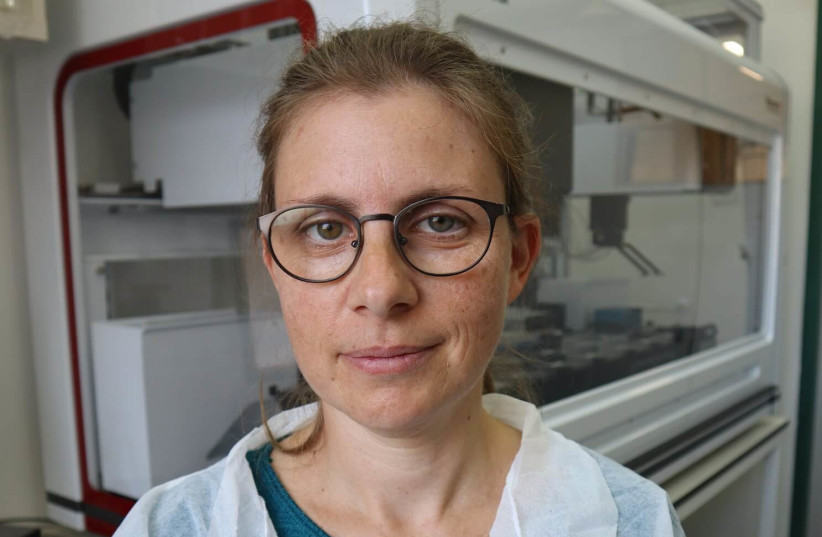Although COVID-19 infections are much less deadly than during the pandemic’s first year, the cunning and elusive virus has since developed a large number of mutations far exceeding the rate that was initially observed. Where do these variants come from and what circumstances empower them?
Virus “detectives” at Tel Aviv University (TAU) and Sourasky Medical Center have uncovered the answers. Patients with weakened immune systems from chronic diseases and those taking medications that reduce the body’s ability to fight invading pathogens are at risk for chronic infection and develop several highly mutated coronavirus variants.
Although this is disconcerting, there is also some good news: While many different variants are formed in immunocompromised patients, these mutated forms are less likely to spread to others.
The study was led by Prof. Adi Stern and doctoral student Sheri Harari of the Shmunis School of Biomedicine and Cancer Research at TAU’s Wise Faculty of Life Sciences, in collaboration with Dr. Yael Paran and Dr. Suzy Meijer of Sourasky Medical Center. It was published in the prestigious journal Nature Medicine under the title “Drivers of adaptive evolution during chronic SARS-CoV-2 infections.”

COVID-19 infections normally end within a few days, and the shedding of RNA can last a few days to a few weeks, but a growing number of case reports are accumulating that document chronic infections spanning weeks to many months of infection, the researchers wrote.
“Notably, chronic infection should not be confused with ‘long COVID’, where infection is cleared rapidly yet symptoms persist; in cases of chronic infections, a replicative virus is detected for extended periods of time.”
The researchers suggest that a weakened antibody response, especially in the lower airways of these immunosuppressed patients, may prevent full recovery from the virus and drive the virus to mutate many times during a lengthy infection. As a result, the virus’ ability to survive and reproduce in these patients’ bodies without restriction leads to the evolution of many variants.
They also found that the variants found among those chronically ill with COVID-19 carry many of the same mutations in their evolution as those present in variants that have the potential to cause severe illness, particularly those mutations associated with elusive disease-killing antibodies. The new findings indicate that while rapidly-spreading variants are rare among the many strains emanating from immunosuppressed patients, the likelihood increases, and they do emerge when global infection rates escalate.
Stern noted that since the outbreak of COVID-19, the rate at which the virus evolved has been rather puzzling. During the first year of the pandemic, a relatively slow but constant rate of mutations was observed, but since the end of 2020, the world has seen the emergence of variants that are characterized by a large number of mutations – many more than in 2019.
Scientific hypotheses
Various scientific hypotheses about the link between chronic COVID-19 patients and the rate of the accumulation of mutations have been suggested, but nothing definitive had yet been proven. In this new study, then she and her team shed light on some pieces of this complex puzzle and tried to answer the question of how variants are formed.
“The coronavirus is characterized by the fact that in every population, there are people who become chronically infected. In the case of these patients, the virus remains in their bodies for a lengthy period of time, and they are at high risk for recurrent infection. In all of the cases observed so far, these were immunocompromised patients – part of their immune system is damaged and unable to function,” Stern explained. “In biological evolutionary terms, these patients constitute an ‘incubator’ for viruses and mutations – the virus persists in their body for a long time and succeeds in adapting to the immune system by accumulating various mutations.”
The study involved an examination of chronic COVID-19 patients at the Sourasky’s Ichilov Hospital. The results revealed a complex picture – on the one hand, no direct connection was found between anti-COVID-19 drug treatment and the development of variants. But on the other hand, the team found the weakened immune system of immunocompromised patients probably creates pressure for the virus to mutate. In fact, the researchers found that there were chronic patients who showed a pattern of apparent recovery, followed by recurring viral infection. In all of these patients, a mutated form of the virus emerged, suggesting that they had not really recovered. This is partially similar to the way the AIDS virus, HIV, operates when the patient has not taken adequate antiretroviral drugs.
“The coronavirus is characterized by the fact that in every population, there are people who become chronically infected. In the case of these patients, the virus remains in their bodies for a lengthy period of time, and they are at high risk for recurrent infection."
Prof. Adi Stern
Upon closer examination of some patients, the researchers found that when such a pattern of apparent recovery is observed (based on nose and throat swabs that were negative for the disease), the virus continues to thrive in the lungs of the patients. The researchers, therefore, suggested that the virus accumulates mutations in the lungs and then travels back to the upper respiratory tract.
“The complexity of coronavirus evolution is still being revealed, and this poses many challenges to the scientific community,” concluded Stern. “I believe that our research has succeeded in peeling back a missing layer of the big picture and has opened the door for further research efforts to discover the origins of the various variants. Our study highlights the importance of protecting immunocompromised individuals who are at high risk for the virus yet may also be an incubator for the formation of the next variant and pose a risk to all of us.”
